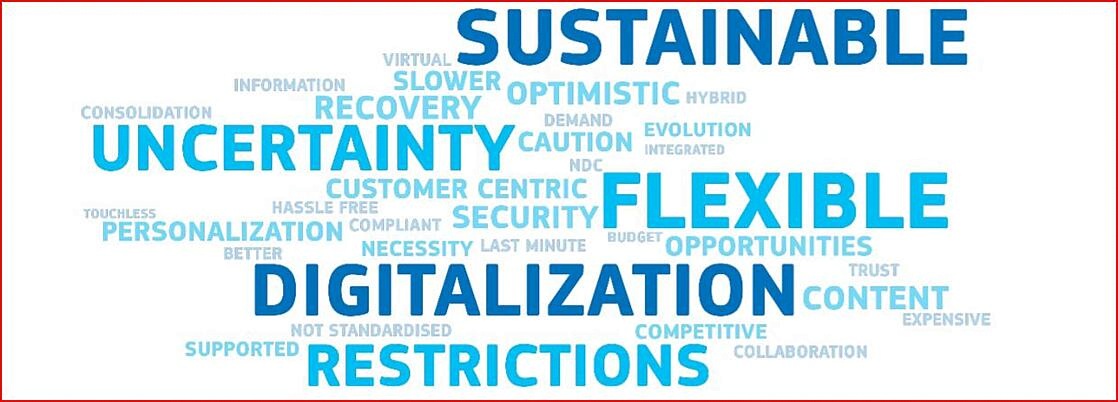Innovation – a Blueprint for Success in a Competitive World

In today’s fast-paced global economy, innovation is no longer a luxury—itis a necessity. Businesses that wish to thrive must embrace innovation as a systematic practice to enhance operations, improve customer satisfaction, and maintain a competitive edge. This article explores the essence of innovation, its importance, and the practical steps businesses, particularly small and medium enterprises (SMEs), can take to foster an innovative culture.
What is Innovation?
At its core, innovation is any idea that improves some aspect of your business. It involves developing and marketing breakthrough products or services that resonate with customers. Innovation is a structured, deliberate process rather than a random occurrence. It requires a commitment to continuous improvement and a focus on creating value.
Why Innovate?
The world is changing at an unprecedented pace. Factors such as technological advancements, shifting consumer preferences, regulatory changes, and environmental considerations continually reshape the business landscape. Companies that fail to adapt risk being left behind and losing to their competitors.
Innovation enables businesses to achieve a variety of benefits as briefly summarised below:
- Increase sales revenue: By delivering unique products and services that delight customers.
- Enhance customer loyalty: Through improved experiences and solutions that address evolving needs.
- Boost productivity: By refining processes and adopting efficient technologies.
- Reduce costs: Through optimized operations and better resource utilization.
- Engage employees: By fostering a culture of creativity and ownership.
- Improve profit performance: By improving all facets of a company’s operations a company can increase its profits.
- Competitiveness: Innovation helps a business to stay ahead of competitors in an ever-changing market by being better at what they do.
In short, innovation is not just about survival—it’s about thriving in a dynamic environment.
Innovation and people
People are the cornerstone of any innovation system. Your employees, customers, contractors, and suppliers all contribute to the innovation ecosystem. However, it starts with leadership. Business leaders must model innovative thinking, empower teams to take risks and foster an environment where ideas can flourish.
The interaction of diverse perspectives often leads to breakthrough solutions. By tapping into the collective intelligence of your workforce, you can create a ripple effect that drives innovation across the organisation.
The systematic practice of innovation will transform any organisation including SMEs from average to dynamic and successful. This opinion is based on my 35 years of implementing innovation in a variety of organisations including large commercial, government agencies and SMEs. Innovation generates a positive culture within any organisation.
Generating ideas
To achieve meaningful innovation, businesses must first gather a wide range of many ideas. For every 100 ideas generated, approximately 10 will be viable, and from those, one exceptional idea can emerge. This underscores the importance of generating a high volume of ideas to uncover transformative opportunities. This is my take on how it works, based on my extensive many years of experience. It’s in the form of an idiom.
However, note to obtain the ‘19%’ improvement, you will need the ‘100 ideas’. That’s just how innovation works. I know because I’ve been implementing innovation for 35 years.
Focus areas for innovation
Innovation can be applied to all aspects of a business to achieve improvements. A summary is provided below, but it’s by no means exhaustive, as any aspect of a business can be improved:
- Firstly generate many ideas – let's say 100. From the 100, there will be some good ideas worthwhile implementing, let's say 10.
- Each of the ideas will result in a 1% improvement on average making a total improvement of 10% overall.
- From the 10 ideas, one idea will most likely result in a 10% improvement.
- Therefore the cumulative impact from these 10 ideas can result in a 19% improvement in your bottom line—a substantial return on investment.
- Customer experience: Improve communication, streamline order processes, and enhance touchpoints such as account management.
- Marketing and sales: Optimise sales channels, contact points, and customer acquisition strategies.
- Employee engagement: Align staff with business objectives, provide training, and clarify responsibilities.
- Processes: Develop clear procedures, utilise checklists, and implement effective signage to increase productivity, safety and other benefits.
- Operations: Enhance the use of equipment, IT systems, and telephony in relation to company operations.
- Inventory management and logistics: Analyse materials, transport, and support services to identify opportunities for improvement.
- Work environment: Ensure workspaces are organised, well-lit, and equipped with suitable tools and furniture that support productive work.
- Asset management: Ensure facilities, equipment, vehicles and other assets are being maintained.
By addressing these areas, businesses can create a comprehensive innovation strategy that touches every aspect of operations.
Practical Steps for SMEs
There are some practical activities that SME leaders can take to search and discover new ideas and bring them into the company for consideration. Some of these key activities are summarised below.
Connect with industry
Networking is a powerful tool for fostering innovation. Attend industry seminars, trade shows, and events to gain insights and exchange ideas. Competitors and peers can be valuable sources of inspiration. Building relationships with like-minded professionals can spark creative solutions and collaborations.
Research
Research by various manes the latest technologies and practices relevant to your industry. These could be found via the internet for example as well as trade shows and conferences. Identify best practices within your industry that could be located in other parts of the world. Note that ideas and creative practices can also be adopted from unrelated industries, so think outside the box.
Competitors
Identify what your competitors are doing and ascertain if they are doing anything better than your company that you could also adopt. There may be some competitors that may be willing to share such advantages with you, but it doesn’t cost anything to ask.
The Innovation Process
Like any effective management practice, it needs to be structured to get the most benefit. There are many models around but there are some fundamentals, that based on my 35 years of experience, are essential to make innovation work effectively. Below is a summary of the seven fundaments I subscribe to:
Step 1: Plan for Success
Establish a structured approach for generating ideas, researching and finally implementation. This includes setting clear objectives, allocating resources, allocating responsibilities and defining timelines.
A process for submitting or recording ideas is critical. An online platform is usually the best, but it depends on your staff and operations, therefore implement a method that suits your business. The critical aspect is visibility and transparency. All staff should be able to see what is being submitted, what has been selected for investigation and finally what has been approved for implementation.
You will need lots of ideas from various sources, especially staff, but also try to include suppliers and contractors, customers.
Step 2: Establish a criteria
Once ideas are generated, businesses must systematically consider each idea to determine if they may benefit the company. There will be many ideas generated if innovation culture has developed, but not all can be implemented. Therefore it is crucial to have criteria for deciding when ideas to pursue. The criteria need to be relevant to the company, and could include for example:
- Profitability
- Sales – value, volume number of customers
- Customer satisfaction and retention
- Operational productivity
- Cost reduction – direct and overhead
- Staff safety and well-being
- Asset utilisation
- Company image and reputation
- Supplier and contractor relations
- Any other criterion relevant to your business
Also, it may be helpful to focus people’s ideas on one particular theme at a time. For example, staff could be advised that for the next three months, we are focusing on customer service because it has been an issue for the business. Having a focus or theme encourages people to direct their efforts in a particular area and therefore more likely to enate ideas and further improvement activities. After exhausting a theme, move on to another one, and so on.
Step 3 Assess the ideas
Assess all the ideas against the criteria and select the ones consistent with the criteria. This can be done by the SME owner or managers, or an ‘Ideas Committee’ can be formed to perform this role, which could include staff members.
When assessing, consider the level of company resources including management time required to manage the subsequent stages of research and implementation.
Document the outcome, so that there is a record of what has been decided. Note that some of the ideas that have been rejected at this stage could be revisited, so it pays to keep records.
Step 4: Research, trial and measure
Pilot the ideas that have been selected to gauge their impact. Use measurable outcomes to evaluate effectiveness and identify areas for improvement. Decide how the ideas will considered, which could include:
- Research and investigation;
- Testing or trialling for a select period; and
- Calculating the expected cost of implementing the idea.
Allocate responsibility for performing the activities, as well as resources such as funds, equipment and time.
Step 5: Decide the worthiness of ideas
Decide whether to fully implement successful ideas. The ideas being researched would again be compared against the company innovation criteria to ascertain their respective value to the company. Consider the cost of implementation versus the expected benefits to the business. Obviously, the benefits need to outweigh the costs, bearing in mind that benefits can include non-financial ones such as customer loyalty, safety and reduced risk.
Step 6: Implement the idea
Once an idea has been approved by the business management, have a plan, preferably documented, that advises all relevant people that the change will be implemented and the reasons for the change. People are more accepting when they know ‘why’ something is changing.
Allocate responsibility for implementing the change, resources and timing, so the change can be implemented effectively and efficiently.
Step 7: Celebrate success
Celebrate the successful implementation of ideas with staff, and other stakeholders who may have contributed to the ideas such as suppliers. Celebrations can range from an email to a function to providing some cash or in-kind bonus.
Celebrating success encourages people to generate more ideas and support the innovation process generally.
Step 7: Learn and Adapt
Not every idea will succeed, and that’s okay. Failure is an essential element of innovation. It provides valuable lessons and often serves as a springboard for better ideas. Cultivating a growth mindset—where failure is viewed as a learning opportunity—can lead to greater resilience and creativity. Analyse failures to understand what went wrong and apply these insights to future initiatives. Continuous learning is key to sustained innovation.
Key Ingredients for Innovation Success
It is a continuous process: continually looking for improvement means you will find it, often small gains, and sometimes big gains, but they will happen because you are looking.
Driven by curiosity: The practice of asking and seeking will lead your company to improvement and greater success.
Structure: A clear process ensures that ideas are evaluated and implemented effectively.
It’s a team game: Encourage teams to ask questions and explore possibilities together – it just works because human beings are social creatures.
Serendipity is created: When you are trying hard to achieve something worthwhile, luck will be on your side and fortune will play its part. Sometimes unrelated ideas and projects will combine to create something new and better than could have happened otherwise. The sum is greater than the whole, or in other words, 2+2 can equal 5 or even more!
The benefits of innovation
While innovation requires investment in time, resources, and effort, the rewards far outweigh the costs. Businesses that embrace innovation gain a competitive edge, delight customers, engage employees, and achieve financial growth.
Final thoughts
Innovation is not rocket science, but it does require intention, structure, and collaboration. By fostering a culture of innovation, leveraging the power of people, and implementing a systematic process, businesses can unlock their full potential.
Innovation provides a blueprint for success in a very competitive world and is definitely a worthwhile investment for any business.





